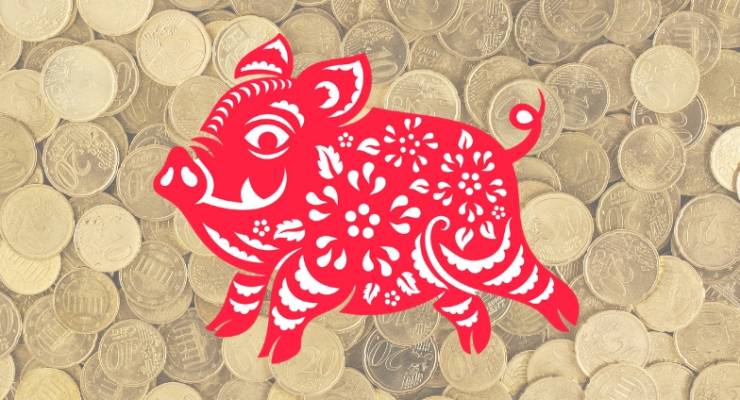
It couldn’t be more fitting: the Hayne report into Australia’s greed-riven financial sector landed on the eve of the Lunar Year of the Pig, a year in which China will be even more front and centre in both global and local news during 2019.
After all, it’s not just the bulk of the Australian financial services industry and the executives and directors that preside over them that have been piggies, tucking into the wallets of consumers, but also the global corporate sector.
A multi-pronged slowdown
The last animal in the 12 of the Chinese zodiac, the pig is meant to bring luck and good fortune, and for China this really means avoiding an economic hard landing.
The global economy has failed to keep up with an explosion in credit growth which led the International Monetary Fund to cut back its global economic forecast for 2019 to 3.5% from a previous forecast of 3.7%, at the same time adjusting its estimate of global expansion during 2018 to 3.7% down from 3.9%.
Along with France and Canada — minnows by comparison — the rise in debt level has been led by China and its proxy Hong Kong.
It’s not just China’s growing pile of debt that is worrying economists. The slowing economy –partly a result of an ever-increasing dent to services, but also demographic change — has seen its workforce peak, and empowered labor unions have been moved against by Beijing.
China is also building something of a rod for its own back by lashing out at concerted action against its national champion, telecoms equipment maker Huawei Technologies. A number of countries, led by Australia, banned the company from next generation 5G mobile networks while its CFO Meng Wanzhou was arrested in Canada facing extradition to the US.
The ripples from this event, which like most things in China is driven by domestic considerations, hand in hand with the US trade war, continues to be felt and can only have a negative impact on the Chinese economy. With the EU now squarely focused on Huawei, a possible ban or “silicon curtain” could be forming between technology in China and the West.
This includes the flow-on effect of spooking international business in the country and arguably represents an inflection point in China’s relationship with the West.
What does it mean for Australia?
Australia, more dependent in trade with China than any other country in the OECD, faces multiple risks from the Chinese slowdown: slowing exports, falling commodities prices and the heft of Chinese buyers in the property market pulling back.
One Australian sector bracing for a shock is international education; it’s worth more than $30 billion (using an opaque sum that seems to include every cent spent at Australian 7/11s by students). China makes up a whopping 30% of the market and 39% of the international higher education market. The lazy tertiary sector, where all too many institutions are now run by money makers, has made the classic business error of relying too much on one customer.
Industry insiders say leading indicators such as school enrolments and university bridging courses all show signs of the first ever decline in Chinese students in Australia by the end of this year. The doesn’t mean there aren’t other major markets to be tapped, but the sector needs to rethink its laser-like focus on China.
Tucking into some Chinese influence
It’s the tertiary sector where Chinese money intersects most obviously with Chinese influence. There are multi-billion dollar donations by wealthy Chinese and Chinese-Australians, and notable activity prosecuting China’s version of history by some student groups.
Australia also continues to face the threat of China’s insidious program of influence in politics, the media and business — all of which that has been well-documented by the media in recent years, most definitively by academic Clive Hamilton in his landmark book Silent Invasion.
As usual, Australians politicians are (willfully?) oblivious as they tuck into to Chinese New Year banquets like little piggies. Many of the celebrations — like the one that the hapless Tony Abbott attended in Sydney along with Liberal Party fundraiser John Caputo and NSW Liberal state MPs John Sidoti and Mark Coure — are paid for by the shadowy United Front Work of the ruling Chinese Communist Party, and its multiple tentacles of influence in Australia.
As reported by the SMH–Age‘s crack investigative team led by Nick McKenzie, participants included:
Sun Yantao, a Chinese Consulate official responsible for Australian United Front work, and Hung Ly, the president of Australia’s peak United Front group, the Australian Council for the Promotion of the Peaceful Reunification of China (ACPPRC).
In typical form, Abbott managed to concurrently boast about his role in alerting Australia to Chinese soft power and claim he had no idea who his hosts were. Someone should teach him how to use Google.
The Chinese must be shrieking in their backrooms at what rubes Australian pollies continue to be and will be resting easier.








One thing is for sure, and it’s that silicon is a technology product invented by the west.
Well a few years back Abbott displayed publicly that he was unaware of the nature of a raw onion, so perchance he did not know he was being hosted by the Chinese Communist Party’s top Australian lobbyists and propagandist.
“The lazy tertiary sector, where all too many institutions are now run by money makers, has made the classic business error of relying too much on one customer.”
A lot like a former Treasurer actually. Laziness is always the corollary of raining gold coins.